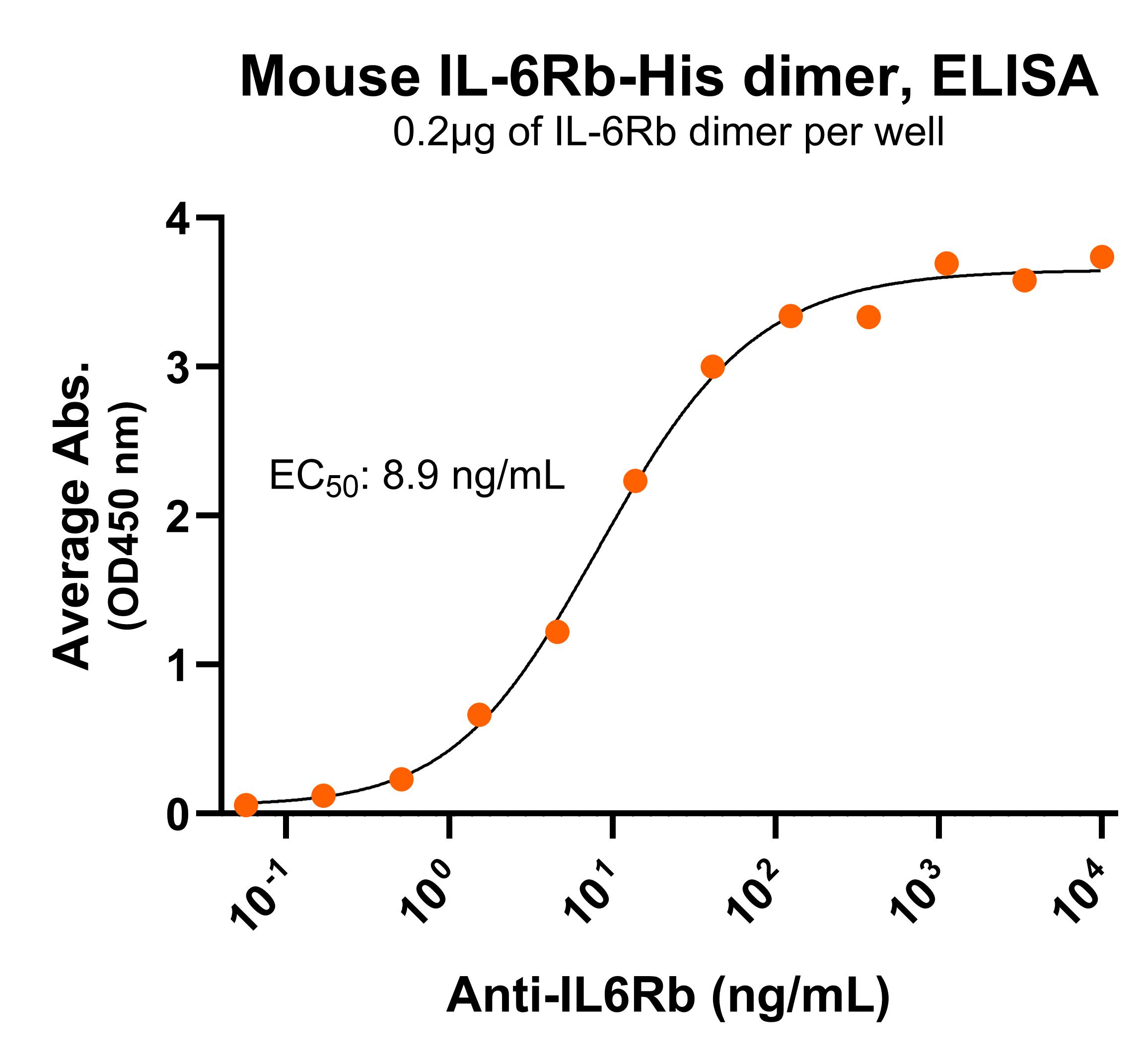 MW: Molecular Weight marker reduced condition
NR: IL-6Rb dimer under non-reduced condition
MW: Molecular Weight marker reduced condition
NR: IL-6Rb dimer under non-reduced condition Immobilized mouse IL-6Rb-His protein dimer(CSP-25159-01) at 2 μg/mL (100 μL/well) can bind anti-mouse IL-6Rb monoclonal antibody with half maximal effective concentration (EC50) range of 4.4-17.8 ng/mL (QC tested).
Immobilized mouse IL-6Rb-His protein dimer(CSP-25159-01) at 2 μg/mL (100 μL/well) can bind anti-mouse IL-6Rb monoclonal antibody with half maximal effective concentration (EC50) range of 4.4-17.8 ng/mL (QC tested).For Research Use Only (RUO)